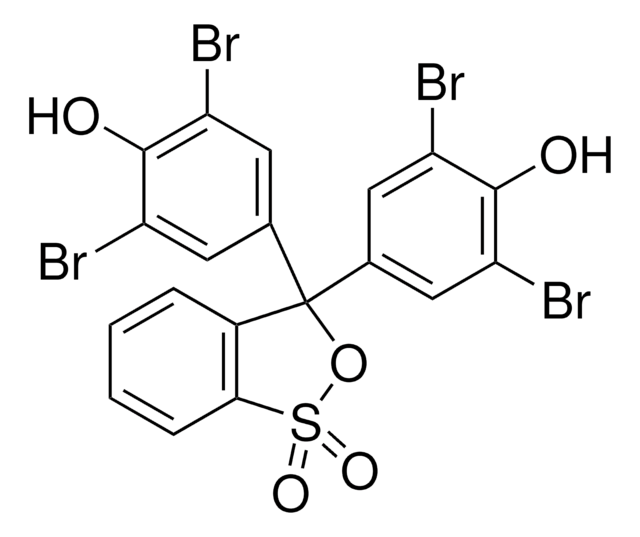32307
Lead(II) acetate trihydrate
puriss. p.a., ACS reagent, reag. ISO, reag. Ph. Eur., 99.5-102.0%
About This Item
Recommended Products
grade
ACS reagent
puriss. p.a.
Quality Level
Agency
USP/NF
reag. ISO
reag. Ph. Eur.
Assay
99.5-102.0%
form
solid
impurities
≤0.005% insoluble in acetic acid
mp
75 °C (dec.) (lit.)
anion traces
chloride (Cl-): ≤5 mg/kg
nitrate (NO3-): ≤10 mg/kg
cation traces
Ca: ≤50 mg/kg
Cd: ≤5 mg/kg
Cu: ≤5 mg/kg
Fe: ≤10 mg/kg
K: ≤50 mg/kg
Mg: ≤50 mg/kg
Na: ≤50 mg/kg
Zn: ≤5 mg/kg
SMILES string
O.O.O.CC(=O)O[PbH2]OC(C)=O
InChI
1S/2C2H4O2.3H2O.Pb/c2*1-2(3)4;;;;/h2*1H3,(H,3,4);3*1H2;/q;;;;;+2/p-2
InChI key
MCEUZMYFCCOOQO-UHFFFAOYSA-L
Looking for similar products? Visit Product Comparison Guide
General description
Application
Signal Word
Danger
Hazard Statements
Precautionary Statements
Hazard Classifications
Aquatic Acute 1 - Aquatic Chronic 1 - Carc. 2 - Eye Dam. 1 - Lact. - Repr. 1A - STOT RE 1
Target Organs
Central nervous system,Blood,Immune system,Kidney
Storage Class Code
6.1C - Combustible acute toxic Cat.3 / toxic compounds or compounds which causing chronic effects
WGK
WGK 3
Flash Point(F)
Not applicable
Flash Point(C)
Not applicable
Regulatory Listings
Regulatory Listings are mainly provided for chemical products. Only limited information can be provided here for non-chemical products. No entry means none of the components are listed. It is the user’s obligation to ensure the safe and legal use of the product.
PDSCL
Deleterious substance
PRTR
Specified Class I Designated Chemical Substances
ISHL Indicated Name
Substances Subject to be Indicated Names
ISHL Notified Names
Substances Subject to be Notified Names
JAN Code
32307-6X250G:
32307-6X100G:
32307-BULK:
32307-1.5KG:4548173296609
32307-50KG-H:
32307-250G:4548173296630
32307-VAR:
32307-1KG:4548173296623
32307-BULK-H:
32307-100G:4548173296616
32307-6X1KG:
Certificates of Analysis (COA)
Search for Certificates of Analysis (COA) by entering the products Lot/Batch Number. Lot and Batch Numbers can be found on a product’s label following the words ‘Lot’ or ‘Batch’.
Already Own This Product?
Find documentation for the products that you have recently purchased in the Document Library.
Customers Also Viewed
Our team of scientists has experience in all areas of research including Life Science, Material Science, Chemical Synthesis, Chromatography, Analytical and many others.
Contact Technical Service











